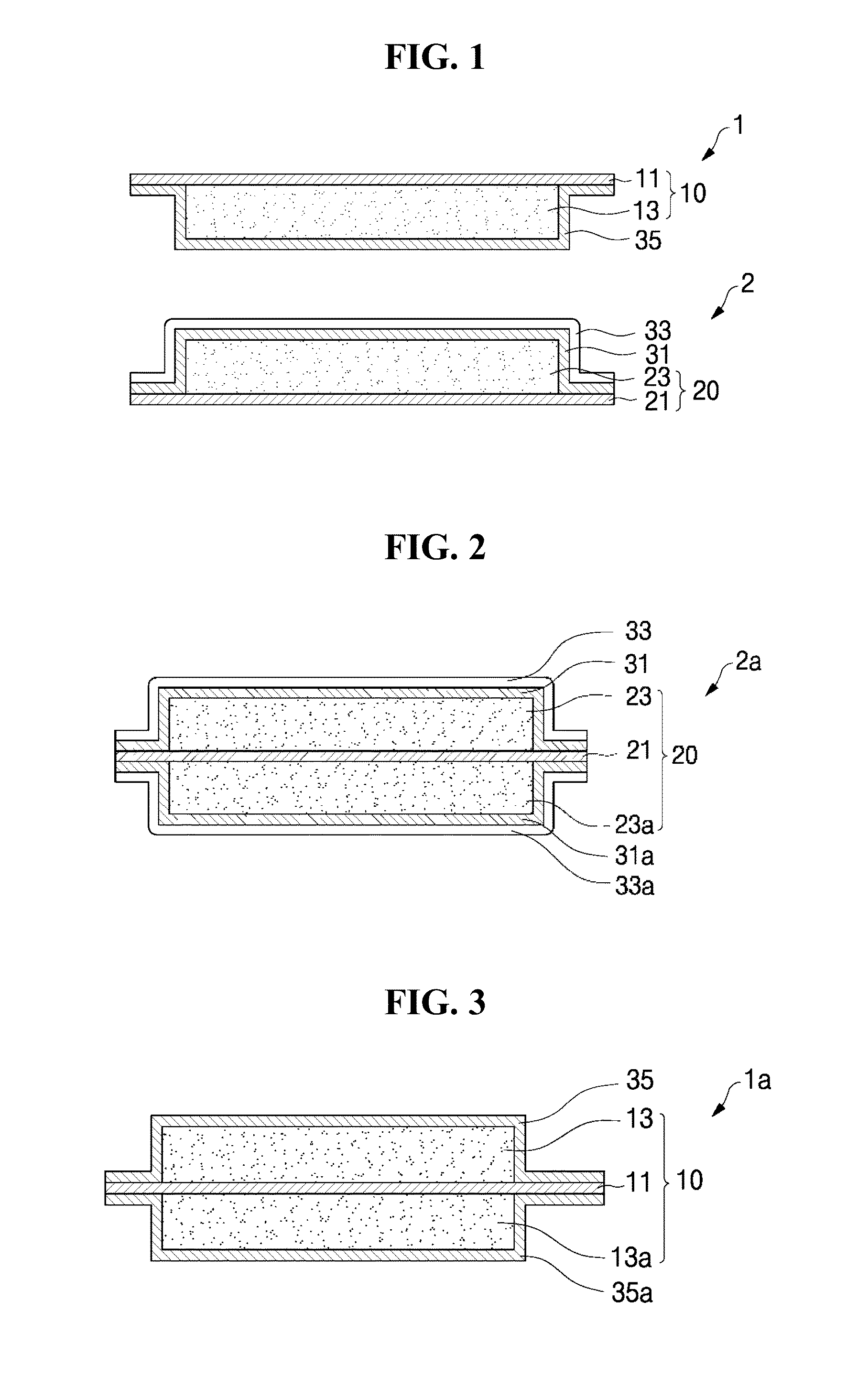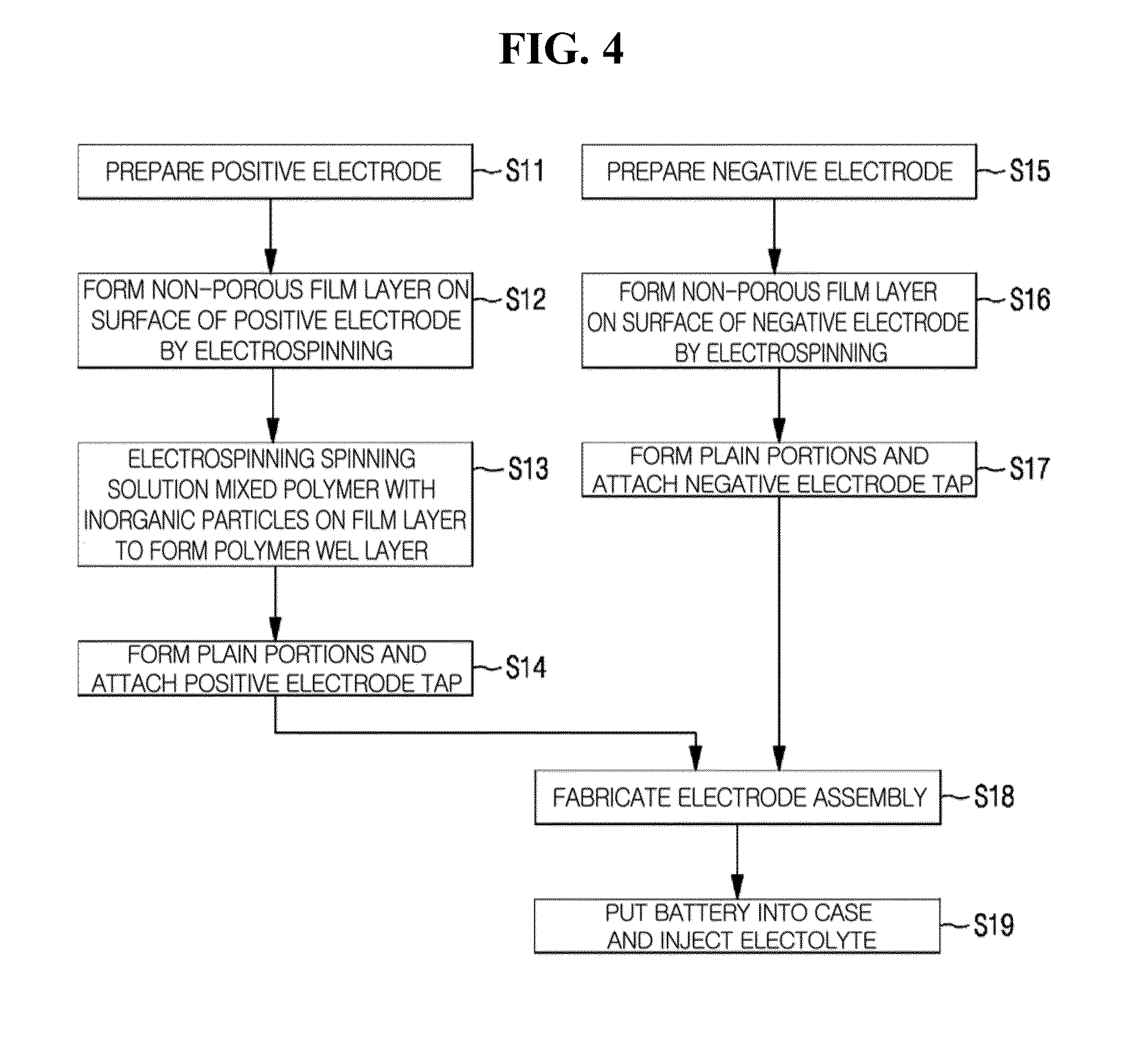Heat-resistant separator, electrode assembly and secondary battery using the same, and method for manufacturing secondary battery
a technology of electrode assembly and separator, which is applied in the manufacture of cell components, final product details, cell components, etc., can solve the problems of shrinkage of sheet-shaped separator, pore blockage of porous membrane, short circuit between the positive electrode and the negative electrode, etc., to prevent short circuit, low interfacial resistance, easy to manufacture
- Summary
- Abstract
- Description
- Claims
- Application Information
AI Technical Summary
Benefits of technology
Problems solved by technology
Method used
Image
Examples
example 1
PAN / PVDF (6 / 4) 11 wt % Web DMAc Solution+PVDF 22 wt % Film (Acetone:DMAc=2:8)
[0199]In order to manufacture a separator made of heat-resistant nano-fibers by an air-electrospinning (AES) method, polyacrylonitrile (PAN) of 6.6 g and polyvinylidene fluoride (PVDF) of 4.4 g were added to dimethylacetamide (DMAc) of 89 g serving as a solvent, and stirred at 80° C., to thus have prepared a mixed spinning solution made of a heat-resistant polymer and a swellable polymer.
[0200]The spinning solution consists of different phases from each other with respect to the heat-resistant polymer and the swellable polymer. Accordingly, phase separation may occur rapidly. Therefore, the spinning solution was put into a mixing tank and stirred using a pneumatic motor to then discharge a polymer solution at 17.5 μl / min / hole. Here, temperature of the spinning section was maintained at 33° C. and humidity thereof was maintained to 60%, while applying a voltage of 100 KV to a spin nozzle pack using a high vo...
example 2
[0211]In the case of Example 2, a two-layer structure of a separator was fabricated, in which all conditions were applied in the same manner as in Example 1, except that a total thickness of the separator was set as 20 μm, in which the first porous polymer web layer was set as 13 μm, and thickness of the non-porous film layer was set as 7 μm, and then characteristics of the measured charging capacity according to C-rate of a 2 Ah grade battery where the obtained separator of Example 2 was applied were represented in Table 1.
examples 3 and 4
[0219]In Example 3, a two-layer structure of a separator was manufactured in which a low content of a co-polymer was used in PVDF of PAN and PVDF that form the first porous polymer web layer in Example 2. In Example 4, a two-layer structure of a separator was manufactured in which a high content of a co-polymer was used in PVDF of PAN and PVDF that form the first porous polymer web layer in Example 2. In Examples 3 and 4, all the other conditions were same as those of Example 2. Characteristics of the discharging capacities measured according to 1C-rate and 2C-rate of 2 Ah grade batteries where the obtained separators of Examples 3 and 4 were applied were shown in FIGS. 14 and 15, respectively.
PUM
| Property | Measurement | Unit |
|---|---|---|
| size | aaaaa | aaaaa |
| size | aaaaa | aaaaa |
| size | aaaaa | aaaaa |
Abstract
Description
Claims
Application Information
 Login to View More
Login to View More - R&D
- Intellectual Property
- Life Sciences
- Materials
- Tech Scout
- Unparalleled Data Quality
- Higher Quality Content
- 60% Fewer Hallucinations
Browse by: Latest US Patents, China's latest patents, Technical Efficacy Thesaurus, Application Domain, Technology Topic, Popular Technical Reports.
© 2025 PatSnap. All rights reserved.Legal|Privacy policy|Modern Slavery Act Transparency Statement|Sitemap|About US| Contact US: help@patsnap.com



